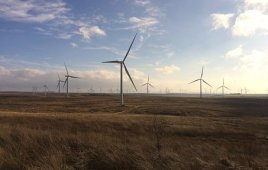Siemens has received an order from MV WERFTEN Wismar GmbH to supply and install turnkey Siharbor onshore power supplies. The onshore power supply system will be used to build “Global Class” cruise ships. Measuring 340 meters (about 1,115 ft.) in length and providing space for more than 5,000 passengers, these vessels are the world’s largest cruise ships, and great amounts of energy are needed for their construction. An onshore power supply with a capacity of up to 12 MVA provides this energy simultaneously in dock and on the quay. The order covers all the necessary components for powering the ships as well as the grid connection. It includes the complete substation, transformers, and medium-voltage switch gear. Siemens will also be responsible for service for a period of five years. The systems are expected to go into operation in the spring of 2019.
MV WERFTEN began to manufacture the world’s largest cruise ships, known as “Global Class,” in March. In the past, it was customary to use external diesel generators during the first phase of construction. The generators produced energy at 60 Hz on land and transferred it to the ship. If the ship was provided with its own generator during the next phase, the latter supplied energy during the remaining fitout phase. The new onshore power supply can handle both steps simultaneously in dock and on the quay. The diesel generators can therefore remain shut down shore side as well as on board of the ship under construction.

For the construction of “Global Class” cruise ships great amounts of energy are needed, which will be provided by a Siharbor onshore power supply system.
Unlike the German 50 Hz power grid, ships have an on-board electrical system with a frequency of 60 Hz. The 20 kV/50 Hz voltage supplied from the public grid is converted to the required voltage and frequency in the transformer substation. This frequency is 60 Hz during the first phase of shipbuilding and 440/60 Hz in the later production phase.
The combustion of ship fuels during lay time and construction is one of the main sources of air pollution in the areas around ports and wharves. Harmful emissions in the shipping industry need to be reduced: This would have an enormous impact on every port city around the world. Onshore power supplies make an important contribution to improving air quality and enable significant savings potential when it comes to nitrogen oxide and sulfur oxide emissions, fine dust and carbon dioxide emissions. An onshore power supply is also much quieter than a diesel generator. This benefits residents as well as the employees at MV WERFTEN.
“We’re using the Siharbor solution for the first time in an environment other than right in port and are implementing a parallel power supply,” says Axel Mohr, head of sales of the Siemens Energy Management Division for industry and infrastructure customers, Region North. “This was an exciting challenge for us, one that will greatly benefit the customer and the environment. We’re proud of this opportunity to do our part in making shipbuilding greener.”
“Siemens is an outstanding partner to us,” says André Machatzky, head of investments at MV WERFTEN. “The entire team is near our Wismar location and can give us immediate support for service and consulting. We’ll continue to build low-emission ships in the future. The excellent collaboration led to fast planning, and we’re looking forward to commissioning.”
Project details/benefits:
• Reduction of pollutant emissions, diesel generators can remain shut down
• Parallel supply with up to 12 MVA in dock and while berthed
• Flexible 50/60-Hz power supply
• Siemens takes on turnkey construction and service
Filed Under: Construction, News




